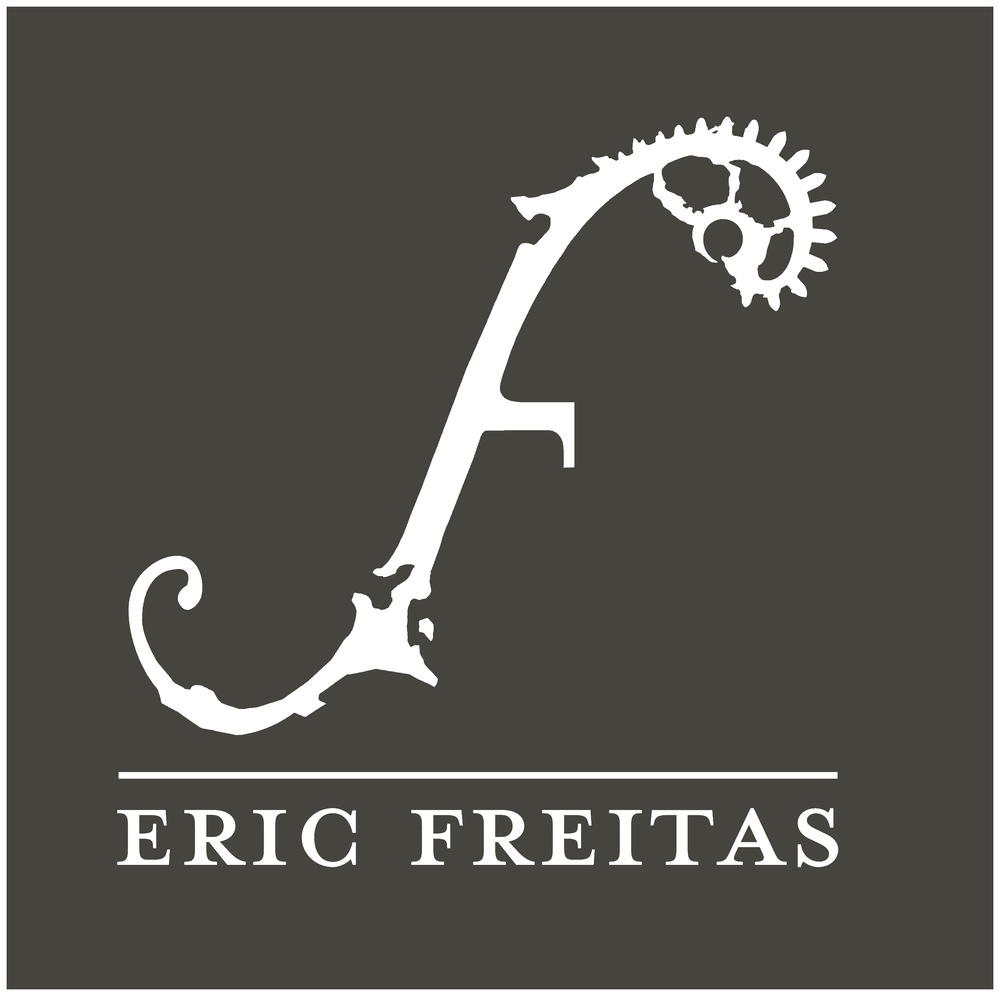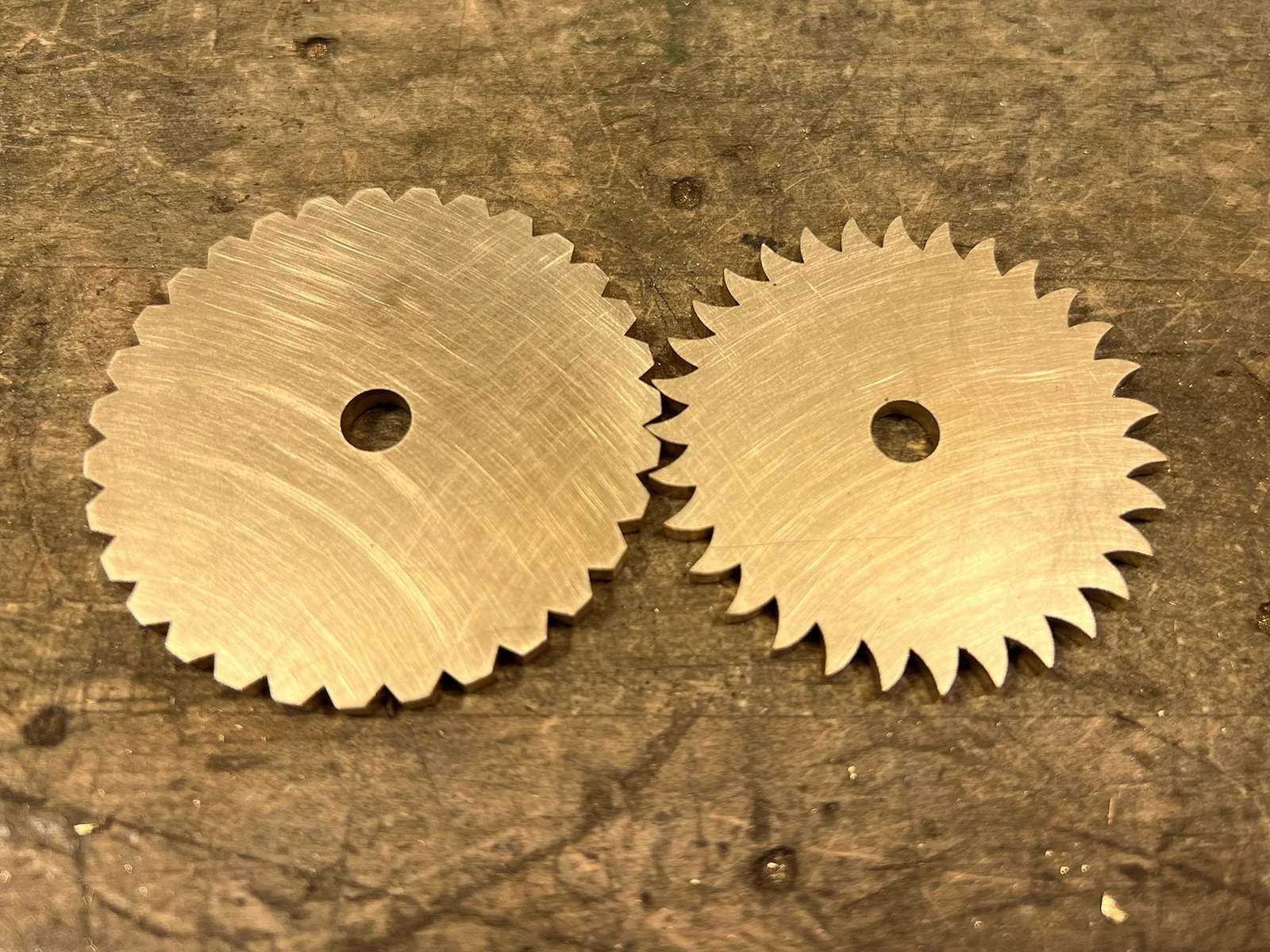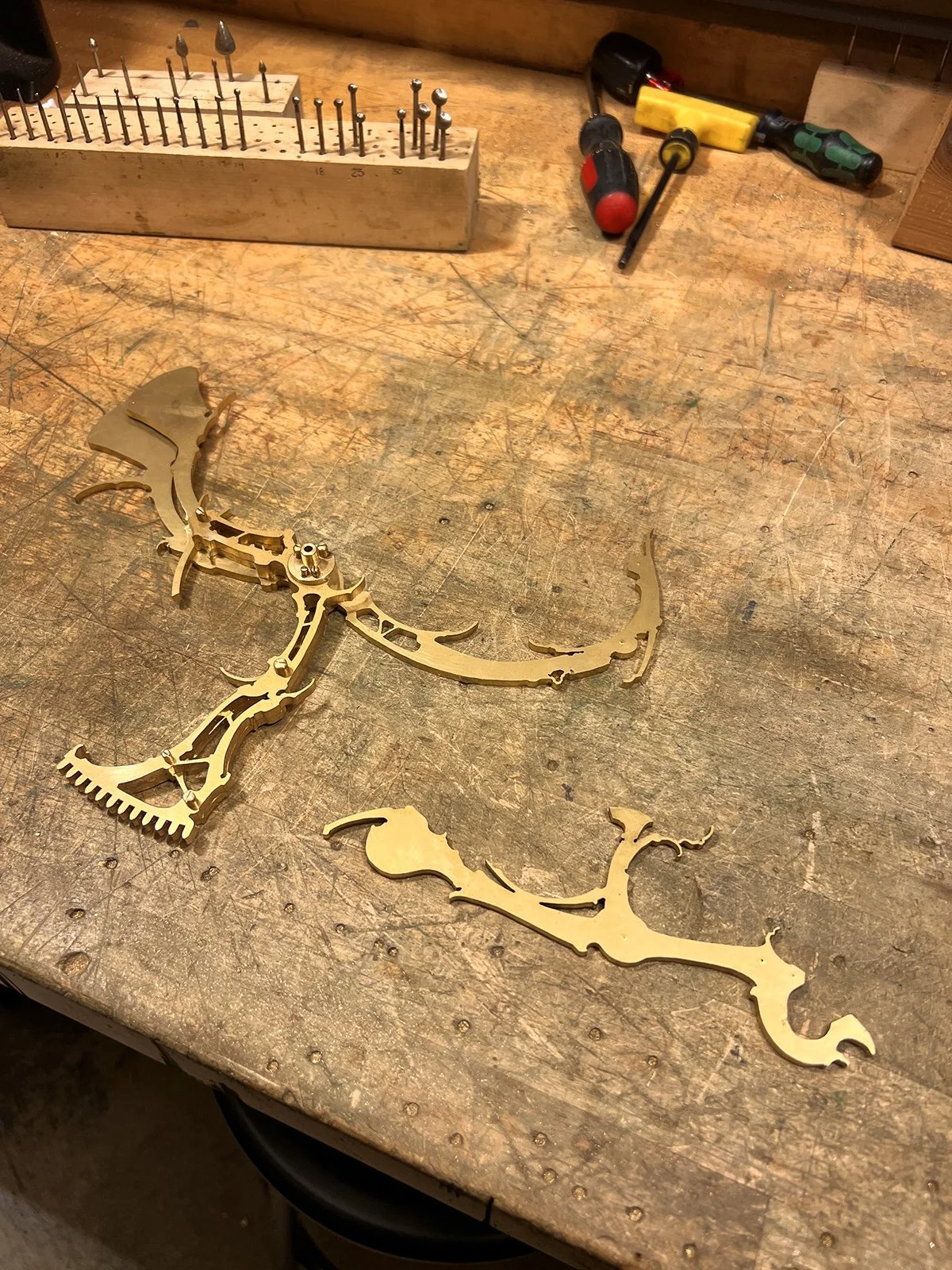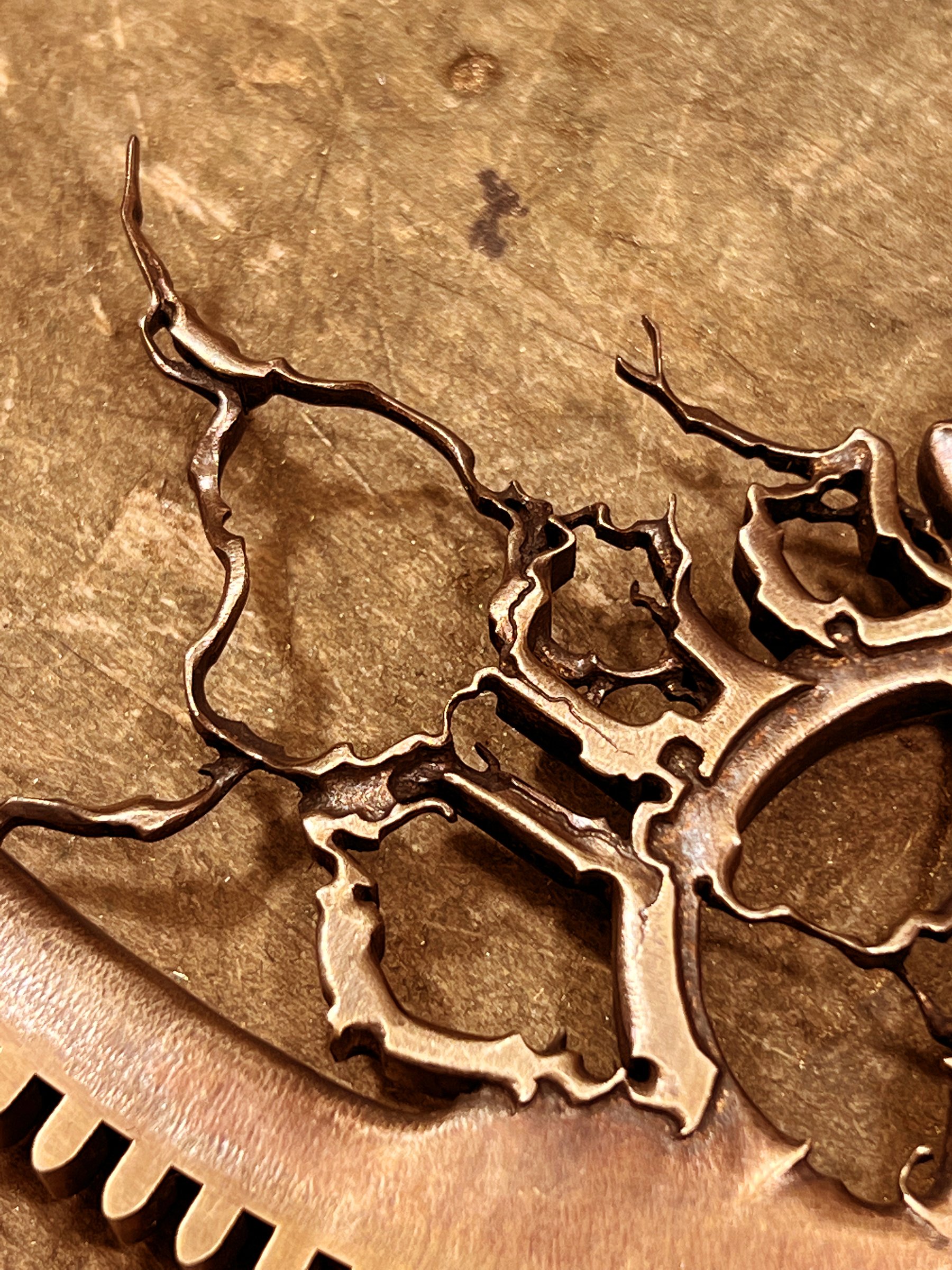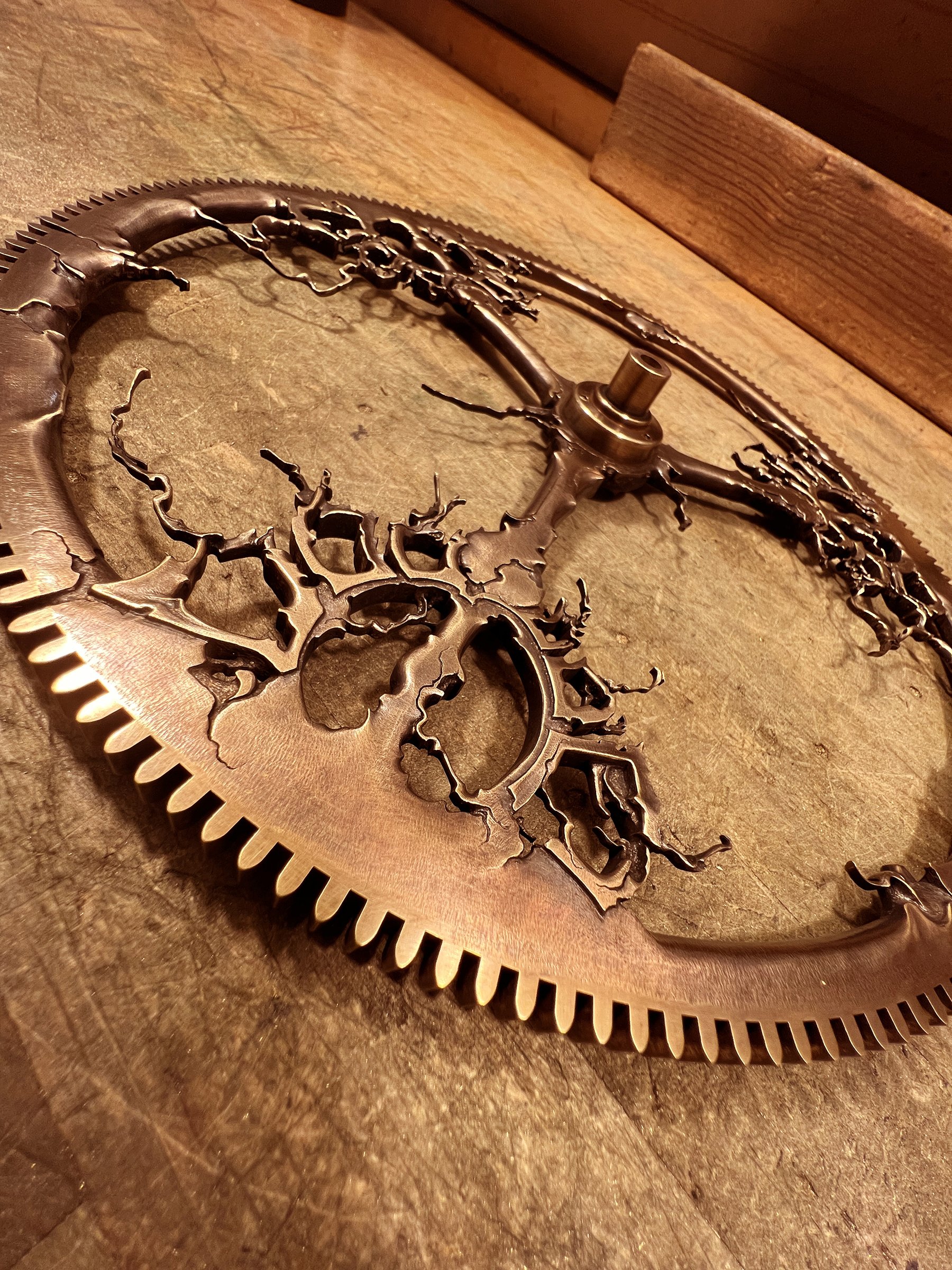So progress has been at a snails pace lately for a couple of reasons. Firstly, this part of the process is always full of lots of trial and error, recuts, and tweaking the geometry. This is especially true of the calendar part of the mechanism, because there are multiple interconnected components that all affect each other. Change one thing and the rest might be off too, so there’s a sort of delicate balance to achieve in the relationship between many of these parts. Especially the perpetual-calendar part of the mechanism.
That part is getting close. It looks rough right now, but once the geometry is working I get to start carving. And that’s when the real fun begins!
The other reason for my slowed pace is (announcement time) I’m going to be moving soon! My projects are growing and so must the space I use to create them. The process of both finding a space that can accommodate my unique needs, and getting my current house ready to sell is very time consuming. However once the move is finished workflow will increase. It’s sort of a short term delay that will make things faster and more enjoyable in the long run.
Moving is always a pain, but moving all of my heavy equipment will be…well, I don’t want to think about it yet, but it’s gonna be brutal.
Working on this clock is always the bright spot amongst the chaos. More soon!
